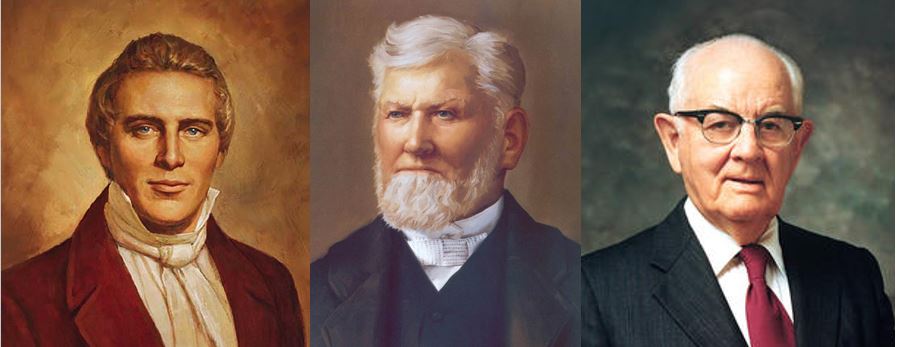To accompany your Come Follow Me study for December 8-14
In addition to reading the three specified documents this week, you will want to:
- Read Chapter 52: Doctrine and Covenants 132:34–66; Official Declaration 1 (churchofjesuschrist.org)
- Read Chapter 56: Official Declaration 2 (churchofjesuschrist.org)
- Read “Chapter 38: The Wentworth Letter,” in Teachings of Presidents of the Church: Joseph Smith, 435–47.
- Read “The Messenger and the Manifesto,” Revelations in Context, at https://www.churchofjesuschrist.org/study/manual/revelations-in-context/the-messenger-and-the-manifesto?lang=eng
- Read “The Manifesto and the End of Plural Marriage,” at https://www.churchofjesuschrist.org/study/manual/gospel-topics-essays/the-manifesto-and-the-end-of-plural-marriage?lang=eng
- Read “Witnessing the Faithfulness,” Revelations in Context, at https://www.churchofjesuschrist.org/study/manual/revelations-in-context/witnessing-the-faithfulness?lang=eng
- Read “Race and the Priesthood” at https://www.churchofjesuschrist.org/study/manual/gospel-topics-essays/race-and-the-priesthood?lang=eng
You may also enjoy watching the following videos:
If you would like a Kahoot game related to these sections which you could use with your family or your class, or which you could play or learn from individually by converting it to a “Challenge” version, click here https://create.kahoot.it/share/articles-of-faith-and-official-declarations-1-and-2/a4183724-6e46-44c6-ac8e-5da4ab89940c. To use it with a group, after clicking on this link, you will need to log into Kahoot, creating a free account if you have not done so previously, then click on the blue “Host Live” button or the gray “Assign” button, depending on how you wish to use the Kahoot. Some of the Kahoot questions may presuppose that the player has read through the suggested answers to the following Points to Ponder and at least has browsed the Institute student manual as well.
Points to Ponder in the Articles of Faith and in Official Declarations 1 and 2
1. Joseph Smith wrote the Articles of Faith in response to an inquiry from John Wentworth, editor of the Chicago Democrat, who in turn was asking on behalf of his friend, a Mr. George Bastow, who was writing a history of New Hampshire. Why would a man writing a history of New Hampshire want to include information concerning The Church of Jesus Christ of Latter-day Saints, then headquartered in Illinois?
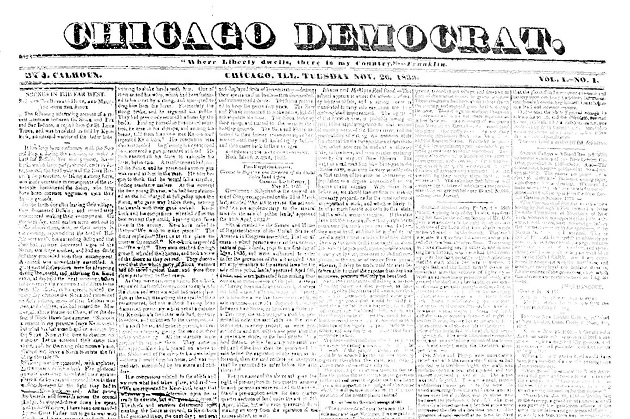
2. Joseph Smith once spoke with disapproval of religious “creeds which a man must believe or be kicked out of their church.” He added, “I want the liberty of believing as I please. It feels so good not to be tramelled. It don’t prove that a man is not a good man, because he errs in doctrine.” (Words of Joseph Smith, 184.) Why, then, would he later write a formal statement of belief, or a “creed” for Latter-day Saints? (Or is there a difference between a formal “creed” and the Articles of Faith? If so, what?)
What were the lively issues on the American religious scene which prompted Joseph Smith to write each of the 13 Articles of Faith?
3. Article 1
4. Article 2
5. Article 3
6. Article 4
7. Article 5
8. Article 6
9. Article 7
10. Article 8
11. Article 9
12. Article 10
13. Article 11
14. Article 12
15. Article 13
16. What are the most significant Latter-day Saint teachings which are not included in the Articles of Faith? Why do you suppose they were omitted?
17. What were the most recent changes made in the Articles of Faith? Why were they made?
18. List three different things that Wilford Woodruff specifically testified the Lord revealed to him as he prepared to issue the Manifesto.
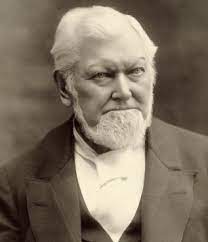
19. Does Wilford Woodruff’s statement that the Lord will never permit the President of the Church “to lead you astray” mean we believe the President is infallible or perfect? If so, how do we reconcile that with the common notion that only Jesus was perfect? If it doesn’t mean that, what does Wilford Woodruff’s statement mean?
20. How many years after the practice of plural marriage became illegal in the US did the Church abandon the practice?
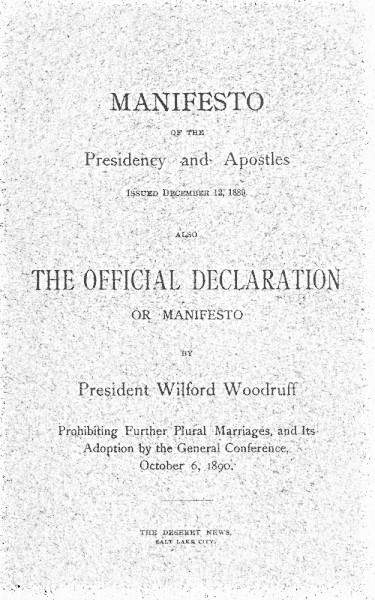
21. How could the Church continue to practice plural marriage when it was illegal, in view of D&C 58:21 and the 12th Article of Faith?
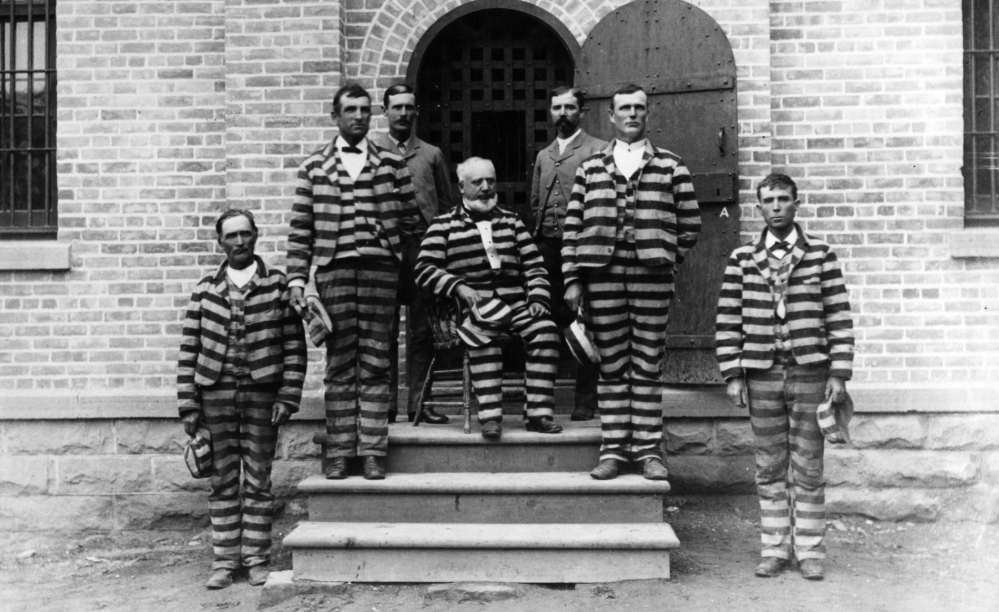
22. Official Declaration #2 does not itself claim to be a revelation but refers to a revelation on priesthood. Where is the revelation itself?
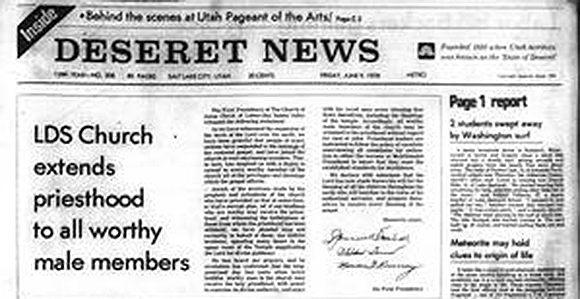
23. What interesting points about the procedure for getting revelation are illustrated in Official Declaration #2?
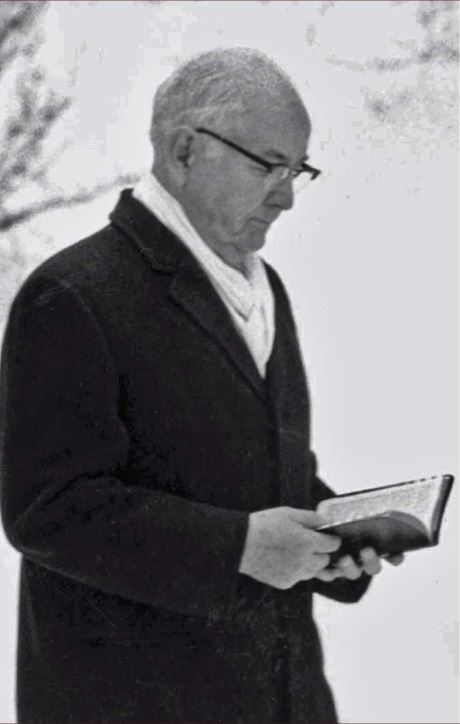
24. What do we know about why some were not ordained to the priesthood prior to Official Declaration #2?
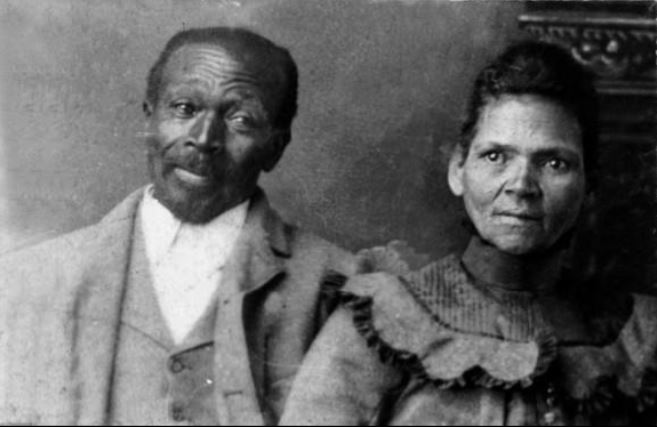
25. In addition to President Kimball, who else received simultaneously the same revelation spoken of in Official Declaration #2 “in a miraculous and marvelous manner, beyond anything that any then present had ever experienced”?
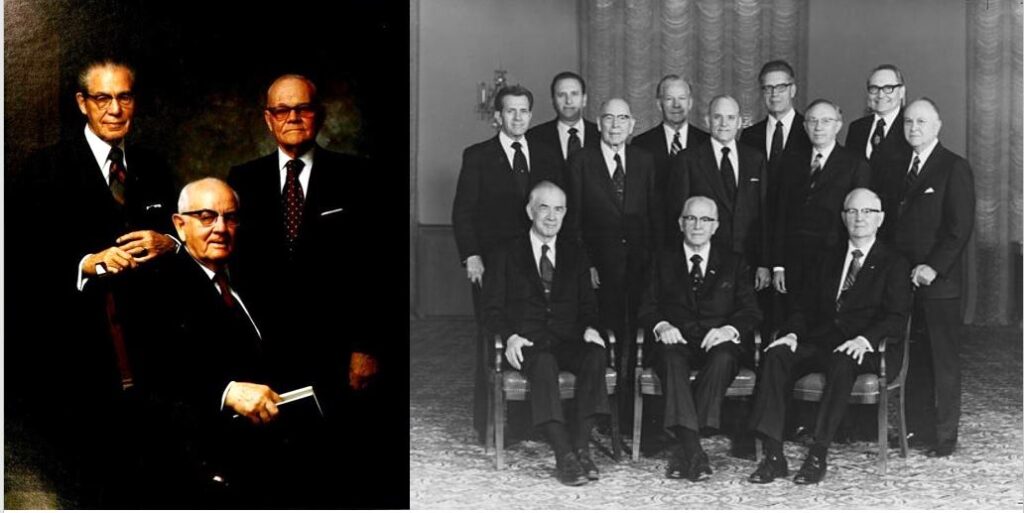
Possible Answers to Points to Ponder in the Articles of Faith and in Official Declarations 1 and 2
1. Joseph Smith wrote the Articles of Faith in response to an inquiry from John Wentworth, editor of the Chicago Democrat, who in turn was asking on behalf of his friend, a Mr. George Bastow, who was writing a history of New Hampshire. Why would a man writing a history of New Hampshire want to include information concerning The Church of Jesus Christ of Latter-day Saints, then headquartered in Illinois?
Joseph Smith himself had once lived in New Hampshire, as a child. Furthermore, many former residents of New Hampshire had moved westward and were now Latter-day Saints. And there were branches of the Church now in New Hampshire. However, we have no record that the Wentworth letter was ever published by John Wentworth, and George Bastow decided to end his history of New Hampshire in 1819, prior to the Latter-day Saint era.
2. Joseph Smith once spoke with disapproval of religious “creeds which a man must believe or be kicked out of their church.” He added, “I want the liberty of believing as I please. It feels so good not to be trammeled. It don’t prove that a man is not a good man, because he errs in doctrine.” (Words of Joseph Smith, 184.) Why, then, would he later write a formal statement of belief, or a “creed” for Latter-day Saints? (Or is there a difference between a formal “creed” and the Articles of Faith? If so, what?)
These Articles of Faith are not intended as a “creed” to which all members must give allegiance, but as an informal outline of basic principles of our faith. The Church encourages a willingness to keep the basic commandments, not a determination to embrace a uniform doctrine. Though some ask what the “Church’s position” is on a great many issues, they’ll find that “the Church” hasn’t felt obligated to take a position on many things not clearly spelled out in the scriptures.
What were the lively issues on the American religious scene which prompted Joseph Smith to write each of the 13 Articles of Faith?
3. Article 1
A Trinitatian-Unitarian controversy was raging in the US, particularly in New England. And some rumored that Latter-day Saints were not even Christian. This article clarifies that we rejected the Unitarian point of view and that we were truly Christian. It does not get off into such topics as the corporeal nature of God or the fact that there are three distinct beings in the Godhead.
4. Article 2
Most Christians believed that Adam’s fall was calamitous and that infants had to be baptized to avoid damnation. But a few, e.g., Baptists, rejected infant damnation and the practice of sprinkling. Theologians also argued over whether men were predestined to salvation or damnation or whether they had, as the Methodists affirmed, free will. This article clearly placed Latter-day Saints on the side of those who believed in man’s free will and of those who rejected infant damnation because of Adam’s sin.
5. Article 3
A further clarification of our rejection of the idea of predestination to damnation. It sided with the Universalists in teaching the universal nature of Christ’s atonement and the possibility of universal salvation.
6. Article 4
Alexander Campbell had greatly agitated the American religious community with his rejection of infant baptism and his teaching that the true church was not to be found but that a restoration was to be sought of primitive power and gifts. He identified four foundation stones: faith, repentance, immersion baptism, and laying on of hands for gift of the Holy Ghost. The first three, he taught, were possible, but not the fourth, as no one on earth had that power. Joseph Smith agreed with the importance of faith, repentance, and baptism, but in contrast to Campbell asserted that we did practice the laying on of hands.
7. Article 5
Most Protestants believed that the only necessary call to the ministry was a feeling of a call from within. This article separates us from virtually all other denominations, except for the Catholics, who agree with us on the need for a line of priesthood authority.
8. Article 6
Joseph Smith here clarified that we believed in a formal Church organization, with Biblical precedents. It was not intended as a comprehensive outline of offices but of functions. For example, “pastors” would include bishops, priesthood quorum and Relief Society leaders, and even ministering elders and sisters. “Teachers” as referred to here were not Aaronic Priesthood officers but those who taught in a Church setting.
9. Article 7
This confirmed that we viewed spiritual gifts as a clear mark of the true church.
10. Article 8
Many supposed that Latter-day Saints had rejected the Bible and replaced it with the Book of Mormon. This clarifies that point, emphasizing our allegiance to the Bible while recognizing its potential limitations and incompleteness.
11. Article 9
This clarified that we not only believed in new or recent revelation but in on-going and future revelation! A William Miller, with his interpretation of scripture, had declared the Second Coming would occur in 1843. Joseph Smith wanted it known that we were not similarly groping in darkness but depended on God for further light as circumstances required.
12. Article 10
Joseph Smith wanted it known that there was much to do before the Second Coming. And contrary to the view of some, he taught that the earth was not to be destroyed at the Savior’s coming but renewed.
13. Article 11
This article reflected the persecution the Saints had suffered and their own tolerance of the viewpoints of others.
14. Article 12
There were many pacifistic sects at that time, and others who felt religious people should not participate in worldly governments. Joseph Smith followed Paul in Romans 13 in expressing our determination to honor earthly sovereigns in their respective stations and obey the laws of the land.
15. Article 13
It is obvious from this article that the Articles of Faith were not intended to be comprehensive. This affirms that true religion is action, not merely belief, but that commensurate good deeds were expected. The “admonition of Paul” seems to be a combination of 1 Corinthians 13:7 and Philippians 4:8.
16. What are the most significant Latter-day Saint teachings which are not included in the Articles of Faith? Why do you suppose they were omitted?
Obvious omissions include:
- celestial marriage
- work for the dead
- pre-mortal life
- man’s potential to become like God
- the Doctrine and Covenants and Pearl of Great Price
- prayer
- the sacrament
- tithing
- Word of Wisdom
- consecration and welfare
- auxiliary programs
- restoration of the Gospel
- endowments
- resurrection
- spirit world
- degrees of glory
Some, such as prayer and the sacrament, no doubt were omitted because we believed them in common with most other Christians. Others, such as our belief in work for the dead and a pre-mortal life, were perhaps omitted because they were so uniquely Latter-day Saint that no one else was asking about them. Joseph Smith also likely realized that non-Latter-day Saints would be more likely to read a short summary of our beliefs than a long exposition.
17. What were the most recent changes made in the Articles of Faith? Why were they made?
Article 10 not that long ago read “that Zion will be built upon this continent.” The changes to the article clarified that “Zion” meant “the New Jerusalem,” and changed “this continent” to “the American continent,” reflecting the increasingly international nature of the Church.
18. List three different things that Wilford Woodruff specifically testified the Lord revealed to him as he prepared to issue the Manifesto.
- What would happen if the Manifesto weren’t issued
- What to ask the Latter-day Saints to get them to accept the Manifesto
- What he was to include in the Manifesto
19. Does Wilford Woodruff’s statement that the Lord will never permit the President of the Church “to lead you astray” mean we believe the President is infallible or perfect? If so, how do we reconcile that with the common notion that only Jesus was perfect? If it doesn’t mean that, what does Wilford Woodruff’s statement mean?
We make no claims of infallibility or omniscience for our prophets, but we do teach that we are to follow them as though they were infallible. (D&C 21:4-5.) They may make occasional minor mistakes and may have unimportant misunderstandings even on doctrinal issues, but the Lord will never allow them to lead the Church into serious doctrinal errors or inappropriate practices (such as stopping plural marriage if the Lord wanted it continued or inaugurating it if the Lord did not want it).
20. How many years after the practice of plural marriage became illegal in the US did the Church abandon the practice?
Twenty-eight. It was first declared illegal with the passage of the Morrill Act in 1862, and the Church issued the Manifesto in 1890.
21.. How could the Church continue to practice plural marriage when it was illegal, in view of D&C 58:21 and the 12th Article of Faith?
It was a matter of priorities. Just as Adam and Eve had to break a lesser commandment in the Garden of Eden to keep a greater one, so may we occasionally find ourselves having to choose and prioritize between conflicting commandments. As D&C 98 makes clear, we are committed to the constitutional law of the land, which the Church never admitted that anti-polygamy legislation was. Proper laws, made in accord with the spirit of the US Constitution, will not contradict the laws of God. When human laws do collide with God’s, God’s always take precedence.
22. Official Declaration #2 does not itself claim to be a revelation but refers to a revelation on priesthood. Where is the revelation itself?
The “revelation” was in the mind and heart of the Presidency and the Twelve. Similarly, everything in the D&C is a record or report of a revelation rather than the revelation per se.
23. What interesting points about the procedure for getting revelation are illustrated in Official Declaration #2?
Points we might highlight include “extended meditation and prayer,” especially in the temple, a “desire” for an answer, spending many hours supplicating the Lord for divine guidance, and reaching a tentative decision subject to the Lord’s “confirmation.”
24 What do we know about why some were not ordained to the priesthood prior to Official Declaration #2?
Virtually nothing. All explanations are speculative, and the Church has disavowed all of the common explanations in circulation prior to 1978. It would seem possible that the Lord may well have permitted Church leaders to go along with societal customs of the day, which permitted the faith of some to be tried, even as it kept the Church from having to deal with the opposition it may have encountered and the challenges it may have presented to some members had black Latter-day Saints been permitted to hold leadership positions and be presented as equal in a day when few in society considered them to be so. It seems just as possible that the Lord also allowed some Church leaders to have mistaken opinions as to why blacks should not hold the priesthood in years prior to when circumstances were ready for Him to reveal Official Declaration #2.
25. In addition to President Kimball, who else received simultaneously the same revelation spoken of in Official Declaration #2 “in a miraculous and marvelous manner, beyond anything that any then present had ever experienced”?
The entire 1st Presidency and the 10 apostles present, as they all subsequently testified.
